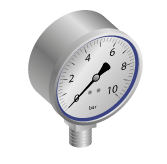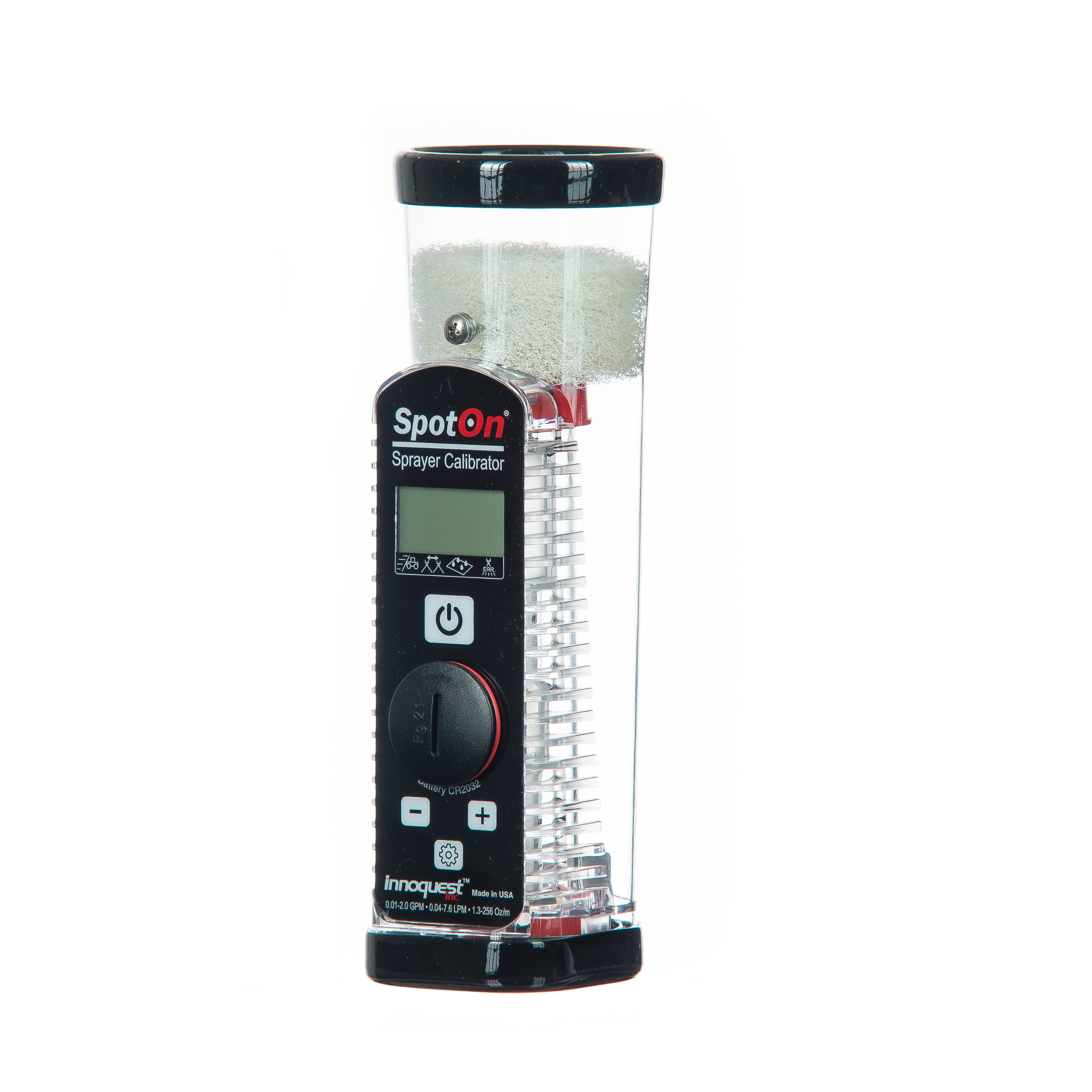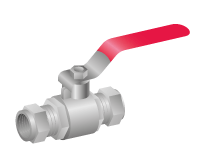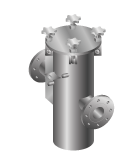Optimising spray bar performance: features and maintenance
Spray bars are a common feature in many production facilities. They consist of a series of nozzles arranged to produce a consistent spray across the length of the bar. Normally these bars are deployed on conveyor systems to provide cleaning, moistening, coating or lubricating sprays. Whilst the humble spray bar is a basic bit of hardware, there are certain design features that can greatly enhance its utility. This article explores a variety of these and explains how a little upfront investment in a good quality spray bar can save significant amounts of time and money in the long run.
Enhanced product features for diagnosing problems
Integrated pressure gauges or flow meters
It is likely that a pressure gauge will be present at some point between the pump and the spray bar, but having an additional gauge just before the spray bar is an incredibly useful diagnostic tool. If poor performance from the spray bar is noticed, there are many potential causes. If the pressure gauge right at the spray bar is showing a drop or spike in pressure, then we can conclude that the problem is probably further down the fluid supply system. We can rule out problems with the bar or nozzles and so focus investigations and remedies on the fluid supply system.

If a pressure gauge further down the fluid supply system, say near the pump, is used, then this gives us less information. For example, a pressure reading near the pump that is within specifications probably rules out a pump fault, but the cause of spray issues could then be at any point between that gauge and the spray nozzle. This is why a gauge at the spray bar is incredibly useful and it only adds minimal cost.
Flow testers for nozzles
An investment in a nozzle flow testing device can save huge amounts of time diagnosing worn nozzles. This will, in turn, potentially save huge amounts of money as we identify and replace worn nozzles more quickly. Our SC2 flow meter can be programmed with the expected nozzle parameters and then, within a few seconds, will diagnose which nozzles are not operating within spec. Worn nozzles can be removed and replaced easily.

Features for minimising maintenance down time
Spare set of nozzles
Spray nozzles are generally not that expensive and they are a wear part anyway. All nozzles will eventually need replacing. The good news is that if they are not used, they can be stored for many years or even decades without any degradation; they are, after all, just lumps of metal or plastic. Best practice for any spray bar setup is to have a complete set of spare nozzles. If any nozzle fails testing, then they can be immediately replaced, and the spare stock can be replenished.
It needs to be remembered that there are 40,000+ nozzle variants in most manufacturers' catalogues and they cannot all be stock items. If manufactured to order, then lead times are normally several weeks. To guarantee that there are no delays in getting replacements, a spare set is essential. It does not matter too much if the spare set takes 4 weeks to restock, but if the active set takes this long it can be a real issue.
Self-aligning nozzles
Most nozzles will be threaded into a spray bar. With flat fan nozzles, the orientation of the fan is very important for spray performance. Threads can become worn, and so the orientation of the fan nozzle may not be exact. Dovetail or bayonet connect nozzle systems allow not only for the very easy removal of spray tips, but they also guarantee the orientation of fan nozzles will be 100% correct. This can save a lot of time fiddling around tightening threads to get the spray bar spot on.

Built-in isolation valves 
A simple spray bar isolation valve means the bar can be removed and replaced easily. Without a valve, it can be messy or complicated to remove the whole bar for maintenance. If a quick connect system is installed just after the valve, then the whole bar can be very easily removed without fuss.
Tips for spray bar maintenance and problem prevention
The above design features can be used to maximise spray bar functionality, minimise downtime and speed up the diagnosis of spray problems.
However, even with all these features included, the spray bar needs to be maintained properly. Below are our top tips for spray bar maintenance:
Built-in filters 
The type and size of filter required will depend on the spray nozzles, the application and the likely levels of particulate contamination. The smaller the orifice size of the nozzle, the higher the levels of filtration that will be required. Small orifice nozzles may require a level of filtration greater than for other applications using the same fluid supply.
As such, if connected to a general-use water supply, it may be necessary for additional filtration for a spray bar system. A few specks of calcium deposit from hard water will probably not be an issue in many other applications around the factory but could lead to big problems with a spray bar system. It does not take much to clog nozzles, so spray systems may well need additional filtration. A filter positioned just before the spray bar that is of a sufficiently fine mesh to protect the nozzles in the bar is, therefore, an excellent design feature that can save time and money.
Regular Inspection
Frequent and often is the mantra here. Even if there are no apparent quality problems, regularly check spray setups for:
• Nozzle blockage
• Wear and tear
• Spray pattern
Keep a log of these parameters and watch for trends. Often these common issues can be seen before quality problems occur. Once spotted, they can be rectified before it affects production. We would suggest weekly inspection for high-use systems and perhaps monthly for low-use.
Regular cleaning and flushing
Again, this should be seen as a preventative measure rather than only be done when a problem occurs. Regular cleaning and flushing will prevent problems before they even occur:
• Use a soft brush or non-metallic tools to clean nozzles
• For chemical residues, soak components in an appropriate cleaning solution
• Avoid using sharp objects that could deform or damage nozzles
• Schedule a system flush after every major use or fluid changeover
Check pressure and flow rates regularly
Small changes in pressure and flow rate may not affect production quality that much, but if the problem persists or gets worse then it certainly will. If pressure and flow are checked regularly and a record is kept, a trend can be spotted which may warrant an investigation. This can help prevent problems before they occur:
• Use gauges to verify that operating pressure matches manufacturer specifications.
• Monitor flow rates to detect clogs or leaks early.
• Install pressure regulators or filters if fluctuations are common.
Note: This process is made far easier with installed pressure gauges and if spray nozzle flow meters are available.
Conclusion
Making a modest investment in enhanced spray bar product features will greatly aid in the diagnosis, monitoring and remedy of performance issues. They will also help speed up and enhance the maintenance of such systems. Spray bars and nozzles are often viewed as very basic bits of kit and therefore neglected. But without proper maintenance and care, these “basic” bits of kit will not function properly and then the entire, often very expensive, fluid delivery system will not perform. The spray bar system is, after all, the last part of the system before the liquid is used. A few extra pounds spent on enhanced features will almost always be money well spent.